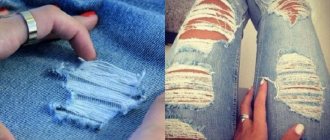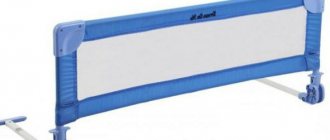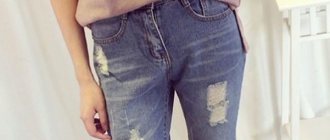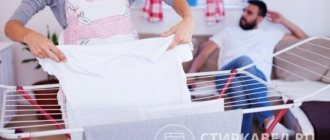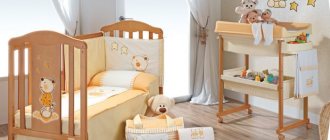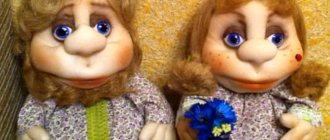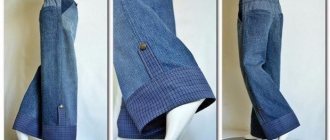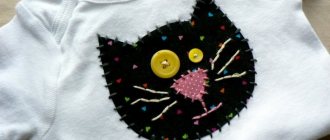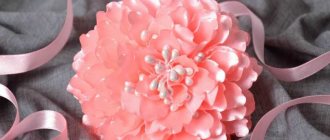Often it is the little things that spoil the appearance of a room and they are the most difficult to find at the right time. Combs, rubber bands, screwdrivers, glasses, pens, the TV remote control are first lying around in disarray in some place, and after cleaning they neatly lie in an unclear place. If this happens often, an organizer with pockets will come to the rescue.
It was originally intended as a place to store shoes, but over time the convenient item has spread throughout the home.
It’s not at all difficult to make such a thing with your own hands, and it’s not difficult to choose the material. To create a beautiful storage for small items, you will need cardboard or plywood, fabric for the base and pockets, threads, needles, decorative cord and ribbon for finishing, and scissors.
Creating such a piece of furniture will be a good reason to spend time with children and teach them how to make useful things with their own hands. The process itself will not take much time, and the material can be unused jeans, shirts, T-shirts, skirts, leftover curtains or old tablecloths.
Hallway organizer
To avoid clutter in the hallway from scattered small items (mittens, scarves, scarves), sew an organizer with pockets convenient for this purpose. Such an organizer, by the way, can be hung on a closet door or on the hallway door. From any thick fabric (you can use, for example, out-of-use curtains), cut out two identical pieces measuring 40 x 80 cm (they can be cut to any size as desired). Sew these pieces first with the wrong side up, and then, turning them right side out, stitch along the edges. Now cut four more strips from the same or another fabric that matches the color. From the strips, make four lines of pockets, each with three pockets (you can vary the number as desired). Tuck the upper edges of the stripes and trim them with beautiful braid or appliqué. Then add depth to each pocket using two folds that are not secured at the top (otherwise the filled pocket will protrude greatly). The entire strip with folds is attached on three sides, as well as between the pockets. The bottom edge of the bottom line of the pockets is sealed with braid or finishing fabric, which will close the edge and strengthen the folds.
Phone organizer
How often do you find your pen or notebook missing when you're on the phone? This can be avoided by sewing a small organizer and placing or hanging it near the phone. The organizer is easy to sew - we sew a long and narrow pocket for a pencil or pen on a base of thick fabric. Another compartment, a little wider, is for an alphabet notebook. Or you can stitch a strip, and then use stitches to “make” pockets.
Bathroom organizer
There are always a lot of different necessary little things in the bathroom - brushes, creams, deodorants. In order for them to be in proper order and in a certain place, we suggest sewing a case. Depending on where it will hang, it can be made larger or smaller. It is better to make all the details of the pockets in different sizes, from fabrics with different patterns. You can also use oilcloth for the product. All parts are cut out along the grain thread with 1 cm allowances along the cuts. Each pocket is edged with bias tape. You can see how to properly edge parts in the master class Edging seams. The finished width of the edging is 0.75 cm. The bottom pocket is made large, which should be carefully stitched to the base. A rail is inserted into the upper drawstring, which is attached to the wall. Don't forget the hanging loops.
Using the same principle, they make a case for storing necessary things in the kitchen (various brushes, powders, napkins) so that they are always at hand.
Organizer for small items
Pockets for storing small and small items (glasses, combs, knitting needles, scissors, etc.) can be of various sizes and shapes.
An organizer for glasses can be made from bright felt. Glasses are put away in a pocket specially designed for storing glasses. The organizer can be folded and fastened with a button, but you can also hang it on a wall or door handle near your workplace using a loop. This way, you are less likely to break or crush your glasses.
It is convenient if combs and necessary toiletries are always at hand, near the mirror that hangs on the wall. A small sachet will be useful for this.
Using the same principle, unique pockets for scissors, measuring tape, crayons, and a thimble are made. Several spare buttons, pins, and small spools of thread will also be placed here.
The case can be folded, in this form it will take up no more space than a wallet and will not weigh down the bag, but at the right time everything you need will be at hand.
Thanks to such pockets, you can greatly increase the capacity of your wardrobe, and there is also room for many important little things.
Closet organizer
To sew the closet organizer, I used two types of fabric - flannel and chintz. I cut out 2 rectangles 40 x 80 cm from flannel and polyethylene. I stitched the edges together, leaving 10cm for turning. I turned it right side out and sewed a finishing stitch around the edge. The base for the pockets is ready. I sewed pockets of different sizes onto the base. I made three large pockets. The lower, middle and upper pockets are rectangles approximately 25 cm high and about 50 cm long (40 cm is the width of the base and + 10 cm for folds and gathers). I gathered the top of the lower and upper pockets with elastic, and placed folds along the bottom of the pockets. The pockets turned out to be voluminous - they fit a lot of things. I sewed pockets on the top pocket - for handkerchiefs, creams, etc. The pockets are arbitrary in width and length. In order to prevent the pockets from sagging too much due to an overabundance of things, I sewed and stitched loops to the base, and sewed buttons to the pockets. Buttons and loops can be replaced with Velcro tape (Velcro). I sewed such an organizer after reading the book “To Help Housewives.” I used some quotes from the book in this article.
Handicraft organizer
Organizers for handicrafts vary in purpose. A needlewoman who is interested in sewing will be interested in this organizer, which is easy to make with your own hands.
For those who like to knit, you need a case for knitting needles, which is made on the same principle as a case for glasses.
The base is made of cardboard covered with fabric, the pocket and lintel are made of any bright patterned fabric. Height - 45 cm.
The frame of the craft box is covered with fabric. Pockets for scissors, knitting needles, glasses, etc. are sewn on before the frame is covered.
Organizer for the artist
An artist's folder can be made simply. Two rectangles of the required length and width, depending on the size of the sketches, are cut out of cardboard and covered with matting or harsh canvas.
They are sewn together, wearing straps and fasteners are sewn on. You can make a beautiful applique from colored fabrics - for example, a jug for brushes and a cup for pencils.
Where is the best location?
As mentioned above, pockets can be placed both on the side and at the foot of the crib. They are usually located on the outside of the cradle. Although, if the child is small enough and does not know how to sit independently, the sachet can serve as a protective side. In this case, I hang it inside the cradle. But even when the baby not only sits independently, but also moves around the crib, you don’t have to rush to rehang the sachet. It’s enough to place the little ones’ rattles and favorite toys in their pockets, and then mom’s lifesaver turns into a fidget playground.
DIY organizer made from old jeans!
Denim fabric is quite durable. Therefore, making a wall organizer out of it is a great idea. This is a wall panel with pockets in which you can put anything.
And to make it look stylish, when sewing it, beautiful stitches, pockets and other parts of the jeans are preserved. An organizer made from old jeans can be a great gift for your beloved man.
This organizer can be used not only in the house, but also in the car or garage to store various useful little things.
Before sewing the organizer, you need to decide what things you will use it to store and whether the pockets are deep enough. You can use belt loops (belt loops) to attach photographs and other small items. For greater convenience, use pockets from different jeans on one organizer and not only back pockets, but also side ones.
You can even sew an organizer from pockets alone. The base for the organizer is made by sewing together the pant legs. Before sewing the jeans legs, you need to rip the seams, cut off thick seams, measure the height and width of the future organizer, sew the denim fabrics, and trim the edges.
Or denim pockets can be sewn onto another fabric that suits the style, for example, from an old shirt. And denim belts with loops as edging will not only decorate, but also add rigidity to the structure.
As a base, you can take whole jeans, make slits in the front and sew them to the back to create pockets.
Depending on the design, a denim organizer is also suitable for a child’s…
And for a teenager’s room, especially if it is decorated in appropriate colors.
An organizer made from old jeans can be hung not only on the wall. An excellent solution is a cover for the back of a chair.
Craftswomen will appreciate this idea: everything you need is at hand, very convenient.
You can also make a mini-organizer from old jeans, hang it on the back or armrest of a chair or sofa, and store remote controls for the TV and other devices in it.
- Organizer made from old jeans for a creative person
- And for the summer resident
- Decorate your organizer with appliques and no one will guess that it is made from old jeans
To sew an organizer from old jeans you don’t need any special skills or patterns. Each organizer is made to store certain things and the place in which it will be used. Show your imagination and create your own convenient and functional organizer. We hope our selection has inspired you. Have fun with your crafting!
Source: https://fairy-hobby.ru/organajzer-iz-staryh-dzhinsov-svoimi-rukami/
Convenient solutions for the kitchen
There are always a lot of things in the kitchen. To simplify access to them and at the same time avoid clutter, you can see how to make an organizer with your own hands.
For this you will need:
- thread and needle;
- cutting boards;
- stapler;
- braid and fabric.
You need to make patterns for a rectangular organizer, equal to the boards. We trim them with ribbon. We attach it to the boards using a stapler. Convenient storage containers are ready! You can now store appliances or other small items in them.
Wall pockets
Pockets on the wall are an excellent solution for organizing space in an apartment or house. Organizers of this type take up little space and can perfectly complement or complete a designer’s interior design. Products in matching or subdued tones will help emphasize the style of your home, while contrasting and bright ones will add a touch of joy.
A useful panel can not only be hung on the wall, but also mounted on the door of a room, closet or inside it. There are a huge number of options and varieties, as well as models of useful organizers. Everyone will definitely find a product to suit their taste.
This useful device was held in high esteem in Soviet times, since the furniture of that time was far from modern functionality.
In home economics magazines one could often see step-by-step instructions for making fabric stands with pockets and elastic bands for attaching small items. There you could also find a pattern and recommendations for choosing material.
This description was what today we call a step-by-step master class. Experienced housewives took the idea as a basis and created it. The girls also sewed pockets during their home economics lessons.
Today, pockets for the wall can be easily purchased in online stores, but it is more pleasant to make them yourself.
Types of pockets on the wall
Wall pockets can be divided into several categories:
- According to the intended purpose: for the kitchen, bathroom, children's room, garage, for example.
- Frame and frameless. The product can be soft or have a rigid base made of cardboard or plywood.
- By functionality, for example, universal or special, such as holders for newspapers, documents, slippers, combs, telephone or TV remote control.
- In appearance: single or in the form of a stand.
- According to the method of fastening: on loops, a rod, Velcro, or simply screwed tightly to the wall with self-tapping screws.
Also, wall pockets can serve a decorative function or, as they said in an old cartoon from the Soviet era, cover a hole in the wall. Young mothers store small things in pockets on the wall, and their grown daughters happily hide their “treasures” and dolls.
A variety of materials are suitable for making useful things. Organizers for small items can be not only rag, but also made from:
- oilcloths;
- silicone;
- felt;
- plastic;
- newspaper tubes.
To make a useful device, scrap materials can be used, such as scraps of boards, plastic flasks or bottles. In garages and utility rooms, craftsmen even use cans to make improvised “pockets”! Knitters can crochet or knit pockets, and seamstresses can easily turn even old jeans into pockets!
A little patience and imagination - and a homemade organizer will decorate the hallway or help tidy up the pantry. This convenient invention will also be useful for schoolchildren. Lately, people are increasingly asking to bring wall pockets to kindergartens. There they are placed in lockers and a change of underwear, shoes and the child’s personal belongings are stored there.
Features and purpose
Lockers in kindergartens are most often narrow, with a small number of shelves that do not fit all the necessary things.
It is still difficult for a child to find the right item without outside help. The best option is pockets for a children's locker in the kindergarten. The organizer is attached to the door, has several sections (large and small), can be easily removed, washed or washed. This is especially convenient for small items that can easily get lost on shelves. While in the garden, a child may need the following things: panties, socks, tights, T-shirts, replacement shoes. In addition to a change of clothes, the baby needs to have a sports uniform and Czech shoes. There are also personal hygiene items - a towel, handkerchiefs, combs, hairpins, elastic bands. To make it easy for your child to get what they need, you should use hanging pockets for the kindergarten locker. A mother who purchases a ready-made organizer or creates one herself should carefully consider the number of departments and their designations. It’s easier to get what you need if you divide the space into zones:
- for essential items;
- for small accessories;
- for small toys;
- for small personal items.
Pockets for a kindergarten locker, in addition to their main function, contribute to the development of motor activity of the baby’s fingers and memory.
Pockets for small items or how to sew a children's organizer
This children's organizer is especially suitable for use in the garden. The cabinet doors there are very narrow and it is difficult to find a suitable holder in the store. In addition, you decide for yourself how many and what size pockets there will be. Here the top ones are for underwear, T-shirts and socks, the bottom ones are for sportswear and shoes.
Based on this master class, you can sew an organizer or, for example, pockets for small items on a crib. How to calculate fabric consumption if you want to sew according to your measurements is written at the end of the material.
Tools and materials for sewing a children's organizer 25×60 cm
- Thick felt (3 mm) 25×60 cm and two pieces 2×8 cm
- Fabric 33×114 cm and binding 4×180 cm (or finished binding 1.8 m)
- Velcro tape (Velcro) 2×4 cm
- Threads
- Needle
- Eyelets 2 pcs
- Cord
- Scissors
How to sew a children's organizer
We cut the fabric into 3 pieces, each measuring 33x38 cm.
Fold in half to form a 3 x 19 cm rectangle.
Sew along the long side, 1 cm from the edge.
Turn it inside out, iron it, and stitch close to the fold.
Now let's form the pockets. We form one pocket on two parts, and two on one. The fold should be at the top.
Stepping back 0.5 cm from the edges, lay folds 2 cm deep and iron.
To form two pockets, we retreat 0.5 cm from the edges and lay folds 1 cm deep. Divide the resulting pocket into two parts (here one pocket is 10 cm, the other is 14 cm). Stepping back 10.5 cm to the right, we lay two opposing folds 1 cm deep. Iron.
We lay out the pockets on a felt base. For convenience, you can baste.
We sew pockets on three sides. We do not sew the folds on the sides. Place a stitch between the folds to secure the two pockets.
- We trim around the perimeter with trim.
- We place the binding on the felt face down, pin or baste it, and sew a line at a distance of 0.5 cm from the edge.
- We turn the binding over to the wrong side of the base, turn it over and hem it (here by hand with blind stitches).
We install eyelets in the upper corners. We tie the cord.
The pockets are ready. If desired, you can sew flaps onto large pockets to prevent the contents from falling out (relevant if they will hang on the cabinet door).
- We will need two pieces of thick felt 2x8 cm (can be made from fabric) and two pieces of Velcro 2x2 cm.
- We sew the Velcro parts with hooks to the felt, and with the soft side to the pockets.
- Sew the felt to the base.
- If you hang it on two nails, the corners will not bend.
Craft material
An organizer for accessories can be made of fabric, cardboard, assembled from wooden, plastic boxes, mounted from leftover PVC pipes, glass jars with a common stand.
Any little things can be used: old cup holders, toilet paper rolls, shoe boxes, bamboo sticks. The heavier the item you plan to put in the compartments, the stronger and denser the material the organizer should be made of.
The fabric for the craft is chosen to be dense; old jeans, barracks bedspreads, plaids, which hold their shape well and do not stretch, are suitable. Light, airy fabrics such as silk, tulle, organza will not work, but decorative elements made from them will look very aesthetically pleasing, adding coziness.
Handmade: DIY wall organizers
— by category — Life Style ᄂLife Style
10 September 2014, 00:00 | Galina Zamyslova
What is the hardest thing to keep in order? That's right - in the little things! There are a lot of them, they tend to roll up and fall over, but they should be at hand and in sight.
Having laid them out in neat boxes, we often forget where and what is stored, and during the next “general analysis” of shelves and drawers we discover a lot of new things from the well-forgotten old ones.
Where is the exit? In our hands! Let’s occupy these hands with a useful task, now called the fashionable word “handmade”, and, rummaging through the heap of unnecessary and out-of-use items of clothing and leftover fabric, we will choose something suitable for making a wall organizer.
Why are wall organizers with pockets so good? They contain a thousand little things without hiding them from our eyes. You can conveniently place the most necessary tools in them, which should always be at hand and in sight. They will take pride of place in a schoolchild’s corner and a needlewoman’s cozy little world; they are convenient in a garage and a small apartment.
Without taking up extra space, they are easily placed on the wall, door, inside of the cabinet door and on the rod of the wardrobe. Of course, you can also buy ready-made organizers for the bathroom and hallway, for jewelry and even shoes.
But made with your own hands, taking into account individual requirements and “customized” to the needs of each member of the family, they are much more convenient and original.
Let's start with recycling old jeans into the right thing - there is enough of this goodness in any home to be enough for both a base and a bunch of pockets, especially since each pair of jeans has two ready-made patch pockets! Denim organizers are suitable for tools, toys, and school stationery.
Our favorite cosmetics are expensive in all respects, all these brushes, small jars and lipsticks. They put boxes and cosmetic bags in the chest of drawers, and then one rolled away, then the other was out of sight and forgotten. What should I do? Sew a couple of organizers for cosmetics.
For brushes, a flat organizer with one patch pocket, divided into narrow compartments with a simple straight stitch, is suitable. If you equip such an organizer with a couple of loops and a pair of ties, then you can hang it next to the mirror and take it with you, rolling it into a roll if necessary.
A hanging organizer is also useful in a nursery - for schoolchildren for an office, and for children for small toys. The main thing is that there are enough pockets for their most important needs!
By the way, sewing voluminous pockets is not at all difficult; they are made from ordinary rectangles!
The simplest organizer can be made from plain or small patterned fabric for essential items: phone, charger, glasses, phone book, etc. A hanging organizer can become not only a useful item, but also an interior decoration if knitted from bright yarn. This one is perfect for girls too - after all, they have their own secrets, their own secrets!
Jewelry lovers find it difficult to resist buying a new treasure and even more difficult to quickly find the right piece of jewelry that matches their outfit. And here a hanging organizer with many pockets will help us out. And so that your wealth does not catch the eye of those who should not, it can be hidden between the dresses in the wardrobe. In this case, you can even make it double-sided!
The same option is suitable for lovers of needlework - everything is in sight! An organizer that can be placed right in front of you, secured under the bed of a sewing machine or to the desktop table top, will also be convenient. There is no need to reach anywhere and rummage through boxes and drawers, because scissors, chalk, and pins are always nearby. A large compartment is also useful - for scraps of thread and fabric that tend to spill onto the floor.
An organizer with pockets can also be a good gift! For example, for amateur gardeners it will turn into a storage for packets of seeds. And for Christmas, you can sew a calendar organizer with little surprises in each pocket for every day.
What can be placed in the convenient pockets of the hanging organizer? Children's toys and stationery, light tools and magazines, slippers and bath towels, cosmetics and jewelry. Try it yourself – it’s very convenient!
Galina Zamyslova , etoya.ru
handmadecharlotte.com, thedomesticdiva.wordpress.com, makeit-loveit.com, themotherhuddle.com, with-heart-and-hands.com, talfonso.hubpages.com, media-cache-ak0.pinimg.com, vintagemint.com, architectureartdesigns.com
online now
Romargo, alba2602, wildrose2000, anzhelika888, nadiu, EvgeniyaVV, -=zulfiya=-112, [email protected] @2017, ~~kisa~~, Sonobella, Mario82, gas, kotyaoz, irina030186, mg1971, tany42, igrishina84, leirina, olechka-plotnikova, Svetlana_sky_7, Mary7766, evvvva, Katyzar666, Olchik3101, Milada68, Yulia_V, tuyano4ka, ZhenyaPo, Lizon, Khazan, asya-borodina, zstarz, urenfornreg, AKhoroshikh, mila_201612, aleks57, natalia0406, Beauty2 2, Makarona, iikuzmin, tanusha1719, marinaPRS, guzel28, P_K, coveredveil, YuliaPechnikova, zhanna75, Juliana Faggotura, lubarol, glenochka, NataliMirosh, -=olga=-1, Strogan, 8787, jannnnnna, chistova_olga, Tigrenochek8, Hungary, Rammstein1, Ksenia988, anastasiya_93, Margerita, [e mail protected] @vk, ALenaV067, vimusic, Lenok2212, comea, Nancy Key, kristi20031991, Lovemel, Vega28, lambordini, evgent, nice.buruhina, Vlada St, RVG, Katerina0486, valeriavladim, Katya_c06, Oks.yusha, RelativisticJet, Coniglio, olga .macepuro, VikaMokka, feok
Source: https://iledebeaute.ru/lifestyle/2014/9/10/46604/
Varieties
Hanging pockets differ in the method of fastening:
- loops or eyelets - they are traditional and most reliable, fixed to the doors with screws or hung on hooks;
- elastic - does not require additional fasteners, but sags under the weight of clothing;
- adhesive tape with a folding top, easy to attach, quick to remove;
- fastenings with double-sided tape are not practical, but they “save” in a situation where for some reason it is impossible to screw a nail or screw into the door.
Pockets for a locker in a kindergarten can have different compartments:
- with elastic;
- closed flaps with Velcro or button;
- open compartments;
- with personalized embroidery or applique of an image of your favorite character.
The existing options for pockets with a folding top edge on the front of the locker are very practical; they are equipped with an inscription with the child’s name, a memorable bright picture, by which the child can easily find his locker among others.
On adhesive tape With bending top
On loops
According to size, the following are distinguished:
- giants, all over the door;
- medium, occupying ¾ of the surface;
- small.
Preference should be given to large and medium pockets on the doors; they will be relevant throughout the entire kindergarten life of a little person in any situation. As the child gets older, the number of changing things in his pocket may decrease, but the size of the clothes itself will increase. Options with a small number of compartments do not cope with their function, are extremely inconvenient, and can only be useful for a while until the baby has a full-fledged organizer.
Decor options
Each cabinet and its hanging pockets are individual. To make the organizer bright, you can use fabric with checkered, striped, polka dots, flowers or stars. If you decide to stick to a plain base for the product, then the finished pockets can be decorated:
- buttons, rhinestones (it is better not to use small parts for safety reasons);
- ribbons and bows, lace;
- applique, stripes, embroidery;
- images of cartoon characters and animals;
- the base can be the same color, the pockets are decorated with a pattern.
The right combination and reasonable selection of decor is important. You should not use many small decorative elements on fabrics with a ready-made pattern. If the base is monochromatic, it can be diversified with a combination of contrasting colors.
Let's do handicrafts together
Why do we need pockets for kindergarten? Mothers who have already raised more than one child know that such an accessory is very convenient to use. As practice shows, closets in preschool institutions are not very spacious. All clothes do not fit.
But we put spare panties, panties, socks, pajamas, and shoes there.
To put everything neatly and neatly on shelves, we came up with original fabric pockets. Of course, you can buy ready-made pockets and simply attach them to the cabinet door, but it’s much more pleasant to make such an item yourself.
You and your child can decorate the pockets with various figures, embroidery, appliqués and other designer little things.
The shape of the pockets should be narrow and long. To avoid getting into trouble, first measure the width and height of the door. Be responsible when choosing fabric. It should be elastic and moderately dense.
